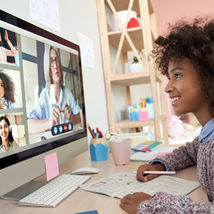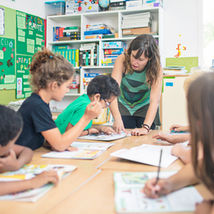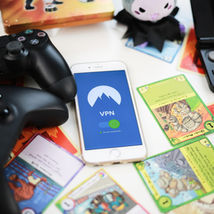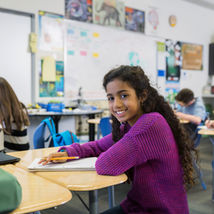Parental Digital Literacy is the Key to Protecting Children Online

Ours truly is the digital age and, more than ever, we’re living much of our lives online. From earning a living to getting an education, shopping to socializing, most of what we do today is done in digital environments, especially during a pandemic. If you’re a parent, the thought of your child roaming free in the wilds of the World Wide Web may well give you anxiety.
But there is good news. It is actually possible to keep your kids safe and secure on the web. And it all starts with your own digital literacy.
Safety First
When it comes to your kids and the internet, the most important concern of most parents, of course, is internet safety. And, as a parent, that begins with your own understanding and mastering of the myriad ways children are accessing the internet, from cell phones to connected gaming devices.
This means that, if you are to be truly digitally literate, you will need to expand your knowledge (our Learning Hubs can help!). You’re going to need to learn how to download the apps that teens are crazy about, such as TikTok and Instagram. You’ll also have to know how to use them across multiple devices.
This way, not only will you be able to monitor what your teens are doing on these various platforms, but you will also be familiar enough with them to identify potential risks they might not have recognized and to establish device-specific safety rules. You will also be able to discern what they find so fun and appealing about these apps, and talk to them about it.
Building Community
Let’s face it, these pandemic years have been tough for us all, but the impact they have had on our children has been especially great. The transition to remote schooling in the face of widespread and enduring lockdowns has taken a particularly significant toll on kids’ social and emotional wellbeing, as many feel deprived of the sense of community and connection that the physical schoolhouse provides.
Developing your skills with the diverse virtual conferencing tools available at low or no cost for computers and mobile devices can help you help your children regain that essential sense of belonging and companionship, even in the digital space.
For instance, as remote learning continues in many school districts and resumes in others, your children may find themselves attempting to engage with the class on platforms such as Zoom or Google Meet. Many school leaders are also increasingly turning to these tools to help students regain a sense of routine in the school day by continuing classroom rituals, from virtual storytime to lunchtime, in the online classroom.
By mastering these tools yourself, you will be better equipped to motivate your children to engage with them. You will also be able to support and encourage your online learners when challenges arise, as they inevitably will.
Supporting Collaboration
It’s not only in mastering virtual meeting spaces that you can help your child regain a sense of community online. One of the biggest challenges that remote learners face is a perceived lack of opportunity for collaboration, the sense that getting help from one’s teacher or one’s peers is nearly impossible in this environment.
In reality, however, online collaboration tools which are affordable and kid-friendly abound. For instance, online sticky notes are a very user-friendly tool for generating and securely sharing ideas with other online users, such as your child’s teacher or classmates. And we love this list of 30 Digital Collaboration Tools for Students.
Knowing how to find, evaluate, test, and then teach children about collaboration tools can be pivotal to protecting them from the potentially debilitating sense of isolation that remote learners can experience online.
Lead By Example
As a parent, you are your child’s first and most important role model, online and off. And you probably already well know what sponges your kids can be, watching and emulating everything you do. So why not use it to your advantage by cultivating your digital literacy as a means to inspire your kids to do the same?
For instance, you can set a great example of good digital citizenship by learning how to set up create a strong password or set up a firewall or VPN and then letting your children see you put this knowledge into action.
Similarly, you can learn strategies for detecting risks such as malware or phishing scams. Then get online with your kids with a specific research goal in mind, such as a homework question or simply a topic your child wants to explore. Let your child see you vetting websites. Talk them through your process for differentiating between safe and unsafe websites and apps.
Chances are they’ll absorb far more from watching you put your digital literacy in action than from simply being told to be wary of unfamiliar pages and unknown people online!
The Takeaway
In this era of digitalization, the web is something that we can scarcely avoid. But preparing your kids to be safe and successful in online environments doesn’t just happen. Parents must be protective. And the best way for parents to begin is by cultivating their own digital literacy.
To get started on your digital literacy journey today, sign up for our free 5-day course for parents!
About the Author

Sam Bowman writes about people, tech, wellness, and how they merge. He enjoys getting to utilize the internet for community without actually having to leave his house. In his spare time, he likes running, reading, and combining the two in a run to his local bookstore.




















